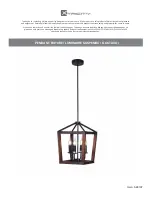
g004653
Figure 25
1.
Cutting edge
3.
Wear/slot forming
2.
Curved area
4.
Crack
3.
Examine the cutting edges of all of the blades
and sharpen the cutting edges if they are dull
or nicked (
).
Note:
Sharpen only the top of the cutting
edge and maintain the original cutting angle
to ensure sharpness (
). The blade
remains balanced if the same amount of metal
is removed from both cutting edges.
g000276
Figure 26
1.
Sharpen at the original angle.
Note:
Remove the blades and sharpen them
on a grinder. After sharpening the cutting edges,
install the blade with the anti-scalp cup and
blade bolt; refer to
Cutting-Unit Blade(s) (page 21)
.
Checking and Correcting
Mismatch of Blades
If a cutting blade cuts lower than the others, correct
them as follows:
1.
Lower the cutting unit onto a level surface,
engage the parking brake, put the traction pedal
in neutral and the PTO lever in the O
FF
position,
shut the engine off, and remove the ignition key.
2.
Ensure that the tire pressure is equal in all the
tires.
3.
Raise the height-of-cut to the 102 mm (4 inches)
position; refer to
(page 12)
.
4.
Rotate the blades so that the tips line up with
one another.
Note:
The tips of the adjacent blades must be
within 3 mm (1/8 inch) of each other. If the tips
are not within 3 mm (1/8 inch) of each other,
proceed to step
and add shims between the
spindle housing and bottom of the cutting unit.
5.
Ensure that the front height-of-cut pins are
resting properly on the frame cushions. If the
pins are not resting properly, place a shim or
shims under the cushion to raise it for proper
alignment.
6.
Position all 3 blades in the A position (
), and measure from the level surface to the
bottom of the tip end of each blade (
and note the measurement.
g010556
Figure 27
22











































